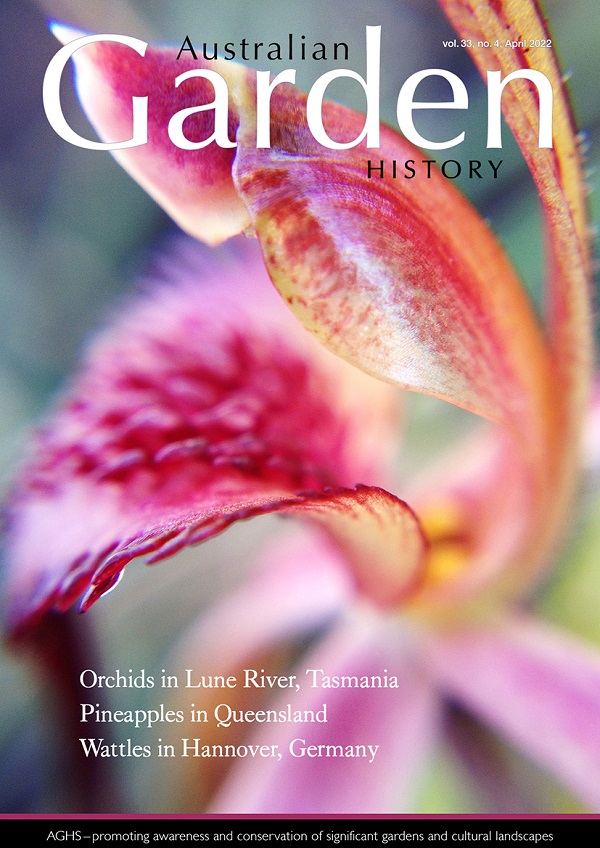Contents
A wild garden in remote Tasmania: In the footsteps of Labillardière Deborah Wace
This is the story of the creation of a garden juxtaposed with the surrounding untamed botanical wonderland of far south Tasmania. For 20 years, the author grew this garden in Lune River, turning a button-grass hillside into a verdant acre of food, fruit and flower.
Captain Charles Sturt: Collector and cultivator as well as explorer Margaret Phillips
Captain Charles Sturt (1795–1869) is best known for his explorations of the Macquarie Marshes, River Murray and Central Australia; few realise his abiding passion for natural history. The explorer took in earnest his task of recording, drawing and collecting specimens of newly discovered species for scientific study.
‘The rough end of the pineapple’: A Queensland cultural landscape Glenn Cooke
Queensland ‘owns’ the pineapple. The state’s eastern seaboard has a distinctive range of tropical agricultural products but only a few, such as pineapples, are in such extensive cultivation as to provide a distinctive regional identity. Queensland also ‘owns’ the expression ‘the rough end of the pineapple’.
The rise of the lady gardener: One aspect of female emancipation Julie Campbell
Women’s interest in gardening, including as a profession, is one aspect of the 19th-century movement for female emancipation. Two of these, Gertrude Jekyll in England and Edna Walling in Australia, established reputations through their professional practice and writing.
Neuholländische’ wattles and other legumes at the Royal Gardens of Herrenhausen, Germany 1797–1852 John Dowe and Boris Schlumpberger
When one thinks of the horticulture and taxonomy of Australian legumes such as Acacia, Glycine and Pultenaea, little would our minds go to Germany in the late 18th and early 19th centuries. Yet, historically important work on ‘Neuholländische’ plants was underway at the Berggarten, one of the component gardens of the Royal Gardens of Herrenhausen at Hannover, Germany. Between them, royal gardeners Johann Christoph Wendland and his son and successor, Heinrich Ludolph Wendland, described about 50 new species of Australian legumes, many from plants grown in the Berggarten. Here we explore the connection between the description of new Australian species and how they came to be cultivated and studied in Germany soon after the colonisation of Australia.
Agapanthus praecox ssp. orientalis: Agapanthus, African lily John Dwyer
Native to the Cape Province of South Africa, Agapanthus praecox is an erect, clump-forming, perennial evergreen herb. A. praecox ssp. orientalis is the most commonly grown species. While agapanthus is now categorised as an environmental weed, it is now recognised as a fire-retardant plant.
For the bookshelf: The Tree Experts, A History of Professional Arboriculture in Britain reviewed by Stuart Macpherson
The Tree Experts, A History of Professional Arboriculture in Britain by Mark Johnston delves deeply into how the Romans first introduced the idea of amenity horticulture and then chronologically follows the development of arboriculture through turbulent history spanning the Dark Ages to the modern era.
For the bookshelf: Great properties of Tasmania reviewed by Prue Slatyer
Great Properties of Tasmania by Richard Allen and Kimbal Baker is the result of lengthy visits and discussions with property owners. As a result, it is as series of conversations about people relating to the land. This makes the book more engaging and appealing than a purely factual history.
AGHS National Oral History Collection: Richard Aitken
Richard Aitken, spoke at length to Roslyn Burge in 2010 about his involvement, from its inception, in the AGHS. In this extract he talks about The Oxford Companion to Australian Gardens, published in 2002. This was the first reference book to cover the history of gardening and garden design in Australia.


